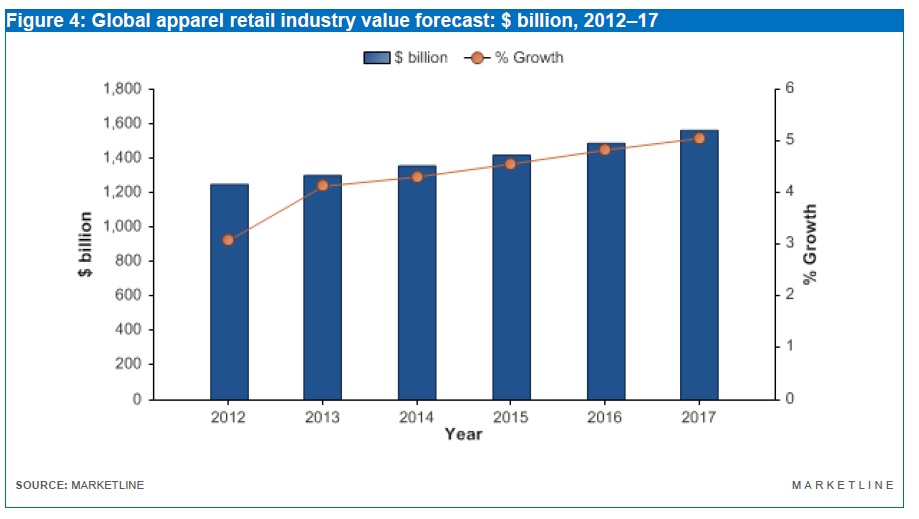The present generation is threatened by the upcoming ecological imbalance. No doubt, we have been pushing sustainability to the back seat for all these years. Therefore, the world is lining forward to the verge of annihilation. Thus, the apparel industry is taking various measures with some useful sustainability trends by developing ecofriendly fashion.
Being one of the major polluters, global apparel and textile industry is taking measures slowly but surely.

The global apparel and textile industry is rapidly growing. In 2011 the production growth was 4.78%. While last three consecutive years, the industrial growth was 5.91% and sales value was 1.4 billion dollars. If this growth is maintained properly, by 2020, the value will cross a staggering $1.65 Billion. (Source: MarketLine)
Where does this report lead us?
The more we buy, the more waste is produced.
A recent report showed that 4% of world's total waste is produced by the textile and apparel industry. Moreover, the total textile and apparel waste accounts for 92 million tons which is even more toxic than e-waste. (source)
Can you guess what happens to the waste?
Only 1% textile and apparel waste is recycled into new garment which is really shocking. (source)
Among all those waste, a little amount goes for disposal, particularly for energy generation. And more than 57% apparel and textile waste ends up in landfill. (source)
Is there a viable solution? Sustainability!
Environmental movement and sustainable fashion initiatives are helping people make decisions. As a result, more than half of the consumers plan to use sustainable clothing.
What trends should be adopted in order to save our green world?
There are numerous fashion trends that we can choose from. Presently, manufactures have been developing alternatives for existing toxic textile and apparel materials like polyester. To help this initiative grow faster, we also have to take responsibility along with all those brands working towards sustainable fashion.
Mentioned previously, the more we buy, the more waste is produced
it's about time we think about it and stop stuffing our wardrobes. In contribution to the sustainability challenge, we must streamline our wardrobes and make do with less. There is nothing to be embarrassed about in having less clothes. If people like Steve Jobs and Mark Zuckerberg can wear the same t-shirt everywhere, why can't we?
Smart shoppers have shifted to recycled fabrics and this is mostly because people are becoming more conscious about the environment. Recycling and upcycling are in fact the latest trends for the apparel and textile industry. In fact, this trend is expected to rise exponentially in coming years.
We ought to put some effort in making the world green again, hence it is important to know every bit of our fashion. Getting started is easy, ask yourself How is it made?
Take measures in dressing sustainable! Since recycling is a very effective process, we must support fashion made out of recycled materials. It's time to change and reduce plastic waste, a number of fashion brands are manufacturing clothing from recycled waste materials.
It is easy to understand that sustainable brands will thrive more compared to big fast fashion brands in a future that is bound to face rising issues in sustainability. According to Global Fashion Agenda, more than 50% consumers will move with sustainable brands. Manufacturers will have to adopt sustainable and ethical ways in production or fall behind as years go by.
Without taking steps in manufacturing sustainable fashion, apparel manufacturers will be ignored by consumers. Brands adopting sustainable and ethical fashion manufacturing ways are actually increasing their consumers loyalty. Hence, think about sustainable products along with transparent and clear branding.
In conclusion, sustainability has become a vital topic for fashion brands, manufacturers and consumers. Because of the aggressive industrial growth, the global fashion industry is shifting towards sustainable manufacturing and waste management. Fashion trends are radically changing and both manufacturers and consumers need to think wisely and plan ahead.